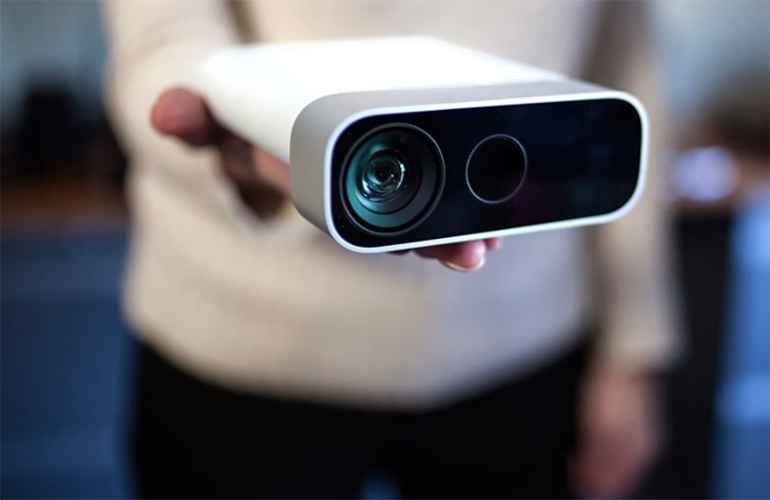|
Listen to this article  |

The Azure Kinect Developer Kit includes the same depth camera module in the HoloLens 2. | Source: Microsoft
Microsoft has decided to end production of its Azure Kinect Developer Kit. The Kit will still be available through Microsoft’s partner ecosystem moving forward.
Existing Azure Kinect Development Kit users can continue using the product without disruption. The Azure Kinect Development Kit SDK will continue to be available for download. Users can also purchase additional devices from Microsoft until the end of October 2023 or until supplies last. Any devices sold will still have the standard limited hardware warranty.
In recent years, Microsoft has partnered with industry leaders in depth sensing technology to release newer iterations of depth cameras built on top of Microsoft-developed iToF depth sensing.
Earlier this year, Orbbec, a developer of 3D vision systems, announced a suite of products developed in collaboration with Microsoft based on its indirect time-of-flight (iToF) depth-sensing technology that was brought to market with HoloLens 2.
This suite of cameras combines Microsoft’s iToF technology with Orbbec’s high-precision depth camera design and in-house manufacturing capabilities and aims to broaden the application and accessibility of high-performance 3D vision in logistics, robotics, manufacturing, retail, healthcare, and fitness industries.
Microsoft also has partnerships with Analog Devices, a semiconductor company. Analog Devices has used Microsoft’s pixel and sensor technology to build its own sensors and camera modules, and it has since brought two depth sensors, a depth camera module, and a custom low-power Depth Image Signal Processor (ISP) to market.
Additionally, Microsoft has partnered with SICK A.G., a global manufacturer of sensors and sensor systems for industrial applications. SICK A.G. is using Microsoft’s technology to build depth cameras and its 3D time-of-flight safety camera.
Launched in 2010, the original Microsoft Kinect quickly became a go-to depth sensor for robotics applications. It was as a source for low-cost, high-quality depth sensing that, at the time, unlocked sensing capabilities that were previously only available to companies and institutions that could afford multi-thousand dollar industrial 3D sensors. Co-developed by Israeli startup PrimeSense, the Kinect quickly found its way into academic and commercial robotic environments, being employed for tasks like obstacle avoidance, object detection, and skeletal tracking.
When Apple acquired PrimeSense for $360 million in November 2013, the original Kinect became history.
Credit: Source link


Comments are closed.